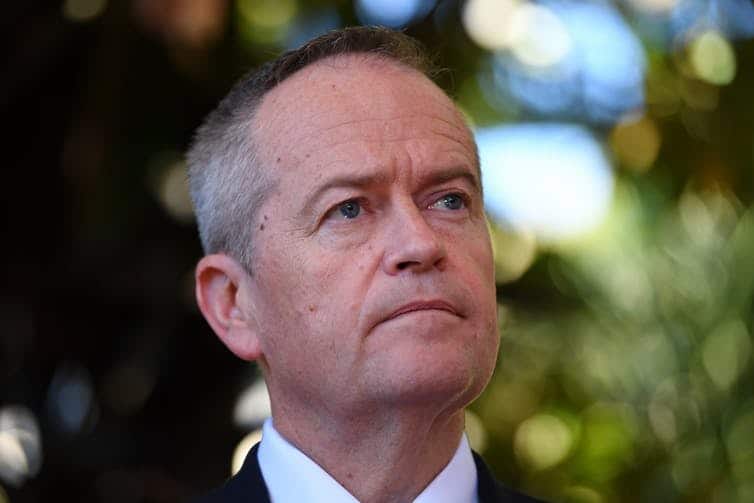Today we run two longer reads on the men who are vying to become prime minister at the 2019 federal election. In this essay, Associate Professor Paul Strangio examines Labor leader Bill Shorten – where he’s come from and, if he wins, what kind of a prime minister he might be. You can also read Michelle Grattan’s essay on Scott Morrison.
“I believe a drover’s dog could lead the Labor Party to victory the way the country is and the way the opinion polls are.”
Uttered by Labor’s Bill Hayden on the day the 1983 election was called, as he dramatically announced his resignation as opposition leader to make way for the irresistible force of Bob Hawke, these words are part of Australian political folklore.
Hayden had every right to feel bitter, as his last-minute supplanting by Hawke robbed him of the opportunity to become prime minister. He had inherited Labor’s leadership more than five years before, when it was reeling from crushing defeat. He had worked conscientiously to restore the party’s shattered stocks by building around him a united and talented front bench, and had overseen a major renovation of the party’s policy program.
Hayden had also made sizeable ground in his first election campaign as leader, winning more than a dozen seats to bring Labor within striking distance of government. Yet his lack of public appeal fuelled nagging questions about him diminishing Labor’s chances of claiming office. He was a stolid media performer, with his speaking style and dress sense the butt of criticism.
Sound familiar?
Of course, we should not overstate the historical analogy; the Australia of the early 1980s and its political circumstances are far removed from the present, and Hayden and Bill Shorten are dissimilar in many ways. Still, an intriguing thing about the 2019 election is that we will discover whether a “drover’s dog” can actually win.
There is no Hawke-like messiah waiting in the wings for Labor and, even if there was an obvious charismatic alternative, the party’s new rules for the selection and deselection of leaders would have impeded any five-minutes-to-midnight change. For Labor, it is the leadership ugly duckling Shorten, or bust.
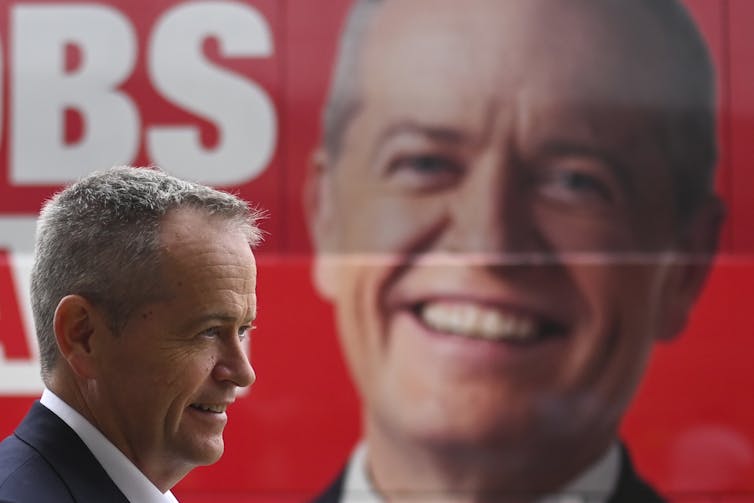
At this stage, the auguries remain promising for Shorten. Despite narrowing through the campaign, the opinion polls have monotonously pointed to a Labor victory. The arithmetic of the electoral pendulum is also strongly on his side.
If Shorten becomes prime minister on Saturday, he will create his own piece of political history. The two-election recovery strategy has mostly been a comforting myth for Australia’s major parties and leaders when regrouping from major defeat.
Since the second world war, several opposition leaders — all Labor — have had consecutive shots at delivering electoral redemption and failed: Bert Evatt, Arthur Calwell, and Kim Beazley. Hayden, as noted, was agonisingly denied a second run.
This leaves only Robert Menzies and Gough Whitlam who have steered their parties back into office after being opposition leader through the preceding two terms: during 1943-49 and 1967-72, respectively. And neither of these giants of Australian politics was crowned opposition leader immediately upon their party’s previous loss of government.
How will Shorten have done it? The longer one pores over the annals of political leadership, the more evident it becomes that good timing and luck are fundamental to success. The political gods have smiled generously on Shorten. While the public’s image of him is still tainted by his factional power plays during the civil war between Kevin Rudd and Julia Gillard from 2010 to 2013, the legacy of that internecine fighting has buttressed his leadership. A traumatised Labor Party has taken refuge in unity and stability since that time, while the leadership selection rules imposed by Rudd during his prime-ministerial second coming have safeguarded Shorten from the risk of precipitous challenge.
His Coalition adversaries have also consistently blessed Shorten. He was gifted early political traction and the mantra for his leadership project (fairness versus inequality) by the Abbott government’s first budget of May 2014, with its litany of broken promises and punitive measures.
Tony Abbott kept giving. Indeed, with so much emphasis on Shorten’s stubbornly poor leadership ratings in the opinion polls, it is easy to forget he enjoyed patches when he led Abbott as preferred prime minister, the most sustained spell coming in the wake of the latter’s Australia Day 2015 knighting of Prince Philip.
Malcolm Turnbull was never less popular than Shorten in the polls, yet he too did the opposition leader his share of favours. Turnbull’s pusillanimity towards his conservative Coalition colleagues, and failure to capitalise on the electorate’s bountiful goodwill towards him in late 2015, saved Shorten from drowning at a point when his prospects seemed most hopeless.
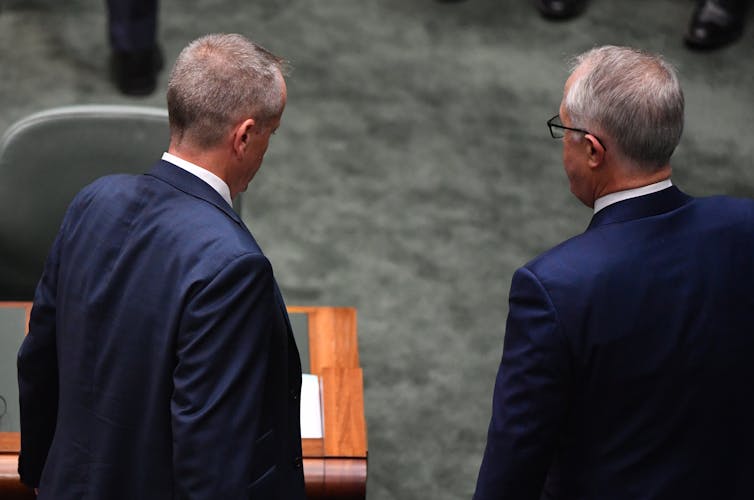
Turnbull followed with a lacklustre 2016 election campaign that aided Shorten, who won enough seats to fortify his leadership against the aspiring Anthony Albanese. And when there were reports of Albanese circling Shorten in the winter of 2018, Turnbull badly misfired by framing the so-called “Super Saturday” by-elections as a test of leadership, only for the Coalition to suffer a serious setback in the Queensland seat of Longman.
Once again, Shorten was thrown a lifeline. Finally, he has richly profited from the Coalition’s destructive divisions and paralysis over climate policy as public anxiety over the issue has escalated.
In that timeless manual of political leadership, The Prince, Machiavelli observed that “fortuna” is not alone sufficient for a leader to prosper; they must adapt to and take advantage of the prevailing circumstances. In Shorten’s case, this attribute has been evident in at least two ways. The first is that he has practised a leadership style perfectly attuned to binding the wounds of Labor’s Rudd-Gillard era. His leadership has centred around the team rather than the individual, prioritising consultation and collegiality.
That leadership style has been the product of necessity and instinct. With the polls relentlessly telegraphing this message, Shorten is surely aware that he possesses neither the easy appeal nor magnetism to play leadership diva. He can only dream of enjoying the pop star popularity of his hero, Bob Hawke.
But where Shorten is confident he matches Hawke – and here their shared background as trade union bosses is significant – is in a capacity for orchestrating groups. Like Hawke, Shorten can talk out differences and coax agreement, giving others a sense of agency and ownership of consensually achieved decisions.
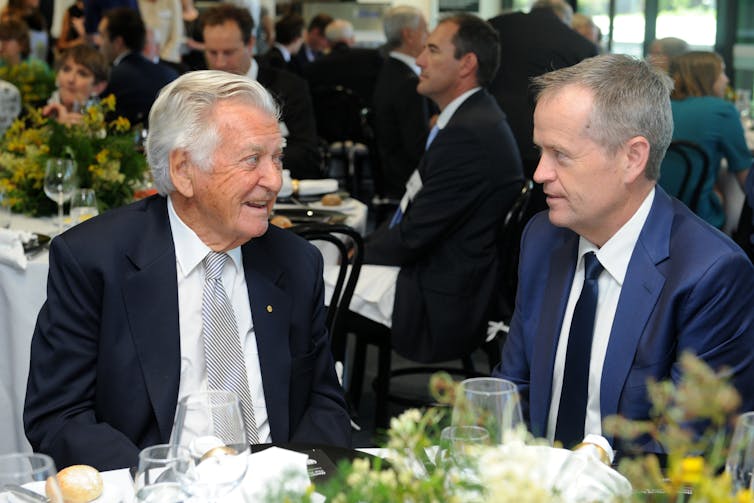
Interviewed by journalist Laura Tingle for a recent profile in The Monthly, Shorten said of his leadership of the Labor Party:
I don’t have to win every argument. My colleagues are capable and smart. I’m part of a much bigger movement. I’ve learnt that to lead you’ve got to be willing to listen, you’ve got to be willing to give some ground.
That team projection was obvious at Labor’s official campaign launch. Shorten insists he will bring the same approach to the prime ministership. He has regularly employed the term “coach” to describe how he will perform the role.
Appearing on the ABC’s Q&A, he declared
I’m not going to be a messiah. I don’t believe in the … authoritarian strongman.
Speaking to The Australian’s Troy Bramston, Shorten expanded on his leadership method:
I always try to find, in any negotiation, the creation of mutual value. I will always try to understand your interests as well as mine, and then I look to where we can work together to create additional value.
An illustration of this shared, enabling model of leadership was Labor’s reproductive health strategy announced earlier this year. Following the plan’s announcement, which among other things is designed to improve women’s access to abortion services in public hospitals, it was revealed that the policy was the result of two years of extensive consultations within Labor’s ranks and with health experts and women’s groups. Its development had been stewarded by the head of the party’s federal caucus committee on women, shadow health minister Catherine King, and Shorten’s deputy, Tanya Plibersek. The policy had risked unsettling the party’s conservative elements and Shorten was inconspicuous in its announcement, but he had clearly empowered it under his watch.
Another example of how Shorten has capitalised on circumstances is in reading the mood of an era in which the market liberalisation paradigm that dominated policy-making for a quarter of a century from the early 1980s has run out of puff. Under his leadership, Labor has resuscitated the idea of an activist government, promising expanded investment in services and strategic interventions in the marketplace (for example, in wage setting).
Labor has boldly committed to wealth redistribution and ameliorating inequalities that are economic and generation-based. There were portents of this direction early in Shorten’s leadership — his 2014 budget reply speech established themes of countering inequality and injustice that he has built on in the five years since.
As in the 2016 election campaign, News Corp commentators have been incandescent at Shorten’s market apostasies. Yet their doyen, Paul Kelly, grudgingly acknowledged earlier this year:
Shorten’s skill has been conspicuous. Acting with audacity, he has picked much of the spirit of the times.
Ironically, that daring has also been reflected in the Labor leader jilting, rather than courting, News Corp.
Shorten’s leadership has not been without weaknesses. There is the persistent shadow of his inability to win personal favour with the electorate. A trawl through past Newspolls confirms that his ratings have been chronically poor. Apart from a brief honeymoon in the months following his election as opposition leader in October 2013, approval of his performance has only outstripped disapproval on a handful of occasions, and then only barely.
He has mostly trailed badly on the question of preferred prime minister. His defenders protest that opinion polls are seldom kind to opposition leaders, and history shows that lagging as preferred prime minister is not a serious obstacle to winning office. These are valid points. Leadership ratings do not strongly correlate with election results. Nevertheless, Shorten’s popularity deficit has been more pronounced than any of the past three opposition leaders during their countdown to becoming prime minister: John Howard in 1996, certainly Kevin Rudd in 2007, and even the unloved Abbott in 2013.
The 2016 Australian Election Study provides insight into the nature of Shorten’s image problem in the electorate. Although scoring creditably on the qualities of “intelligent” and “knowledgeable” (albeit not as highly as Turnbull), survey respondents marked him low on the qualities of “honest”, “trustworthy” and “inspiring”.
Images have a habit of becoming baked in. The perception of Shorten as shifty, which originated during the Rudd-Gillard era, is an abiding problem for him. The author George Megalogenis has identified the opposition leader’s prosaic rhetorical skills as typical of the “apparatchik age” politician. But Shorten has peculiar difficulty in projecting authenticity down the barrel of the television camera or generating a positive emotional reaction among voters from afar. His on-screen ungainliness contrasts with his reputation as a deft worker of small rooms.
Maybe Shorten’s emotionally charged rebuttal of the News Corp tabloids’ snide disputing of his mother’s life story will thaw the electorate’s view of him. More likely, it will take the prime minister’s mantle to significantly reset attitudes towards him and even then, the respect he receives is likely to be stinting in this reflexively sceptical age.
Perhaps, though, there has been a silver lining to voters’ coolness towards Shorten. As already noted, it has reinforced his natural inclination to be a team player. Moreover, his batting on despite the public withholding approval suggests someone with the internal resilience and self-belief required of a head of government to weather the maelstroms that inevitably come their way.
If Shorten becomes prime minister, how will he fare? There are grounds for optimism. As Peter van Onselen observed in The Australian earlier this year, there is something analogous between the situation of Shorten and his team and the incoming Hawke Labor ministry of 1983.
Just as the excesses of the Whitlam experiment were imprinted in the minds of the latter, so too a Shorten government would surely be at pains to avoid a repeat of the follies of the Rudd-Gillard years. Equally, Shorten places great stock on his learning from nearly six years as opposition leader. He told journalist Troy Bramston that:
…the best training ground to become prime minister of Australia is to be leader of the opposition.
Indeed, Shorten’s extended period as opposition leader separates him from most of the recent prime-ministerial incumbents, who served in the former role only briefly (Rudd and Turnbull) or not at all (Gillard and Morrison).
History corroborates Shorten’s belief that enduring the slings and arrows of opposition is a firm foundation for government. It is an opportunity to test and refine leadership practice, and it steels temperament.
And it is a steady temperament — the pioneering social scientist Max Weber wrote about “the firm taming of the soul” — that is arguably the quintessence of successful leadership. That kind of self-mastery is intimately connected with self-knowledge, something for which Howard was renowned. Shorten claims his time in opposition has been a voyage of self-discovery: “I’ve learnt a lot about myself.”
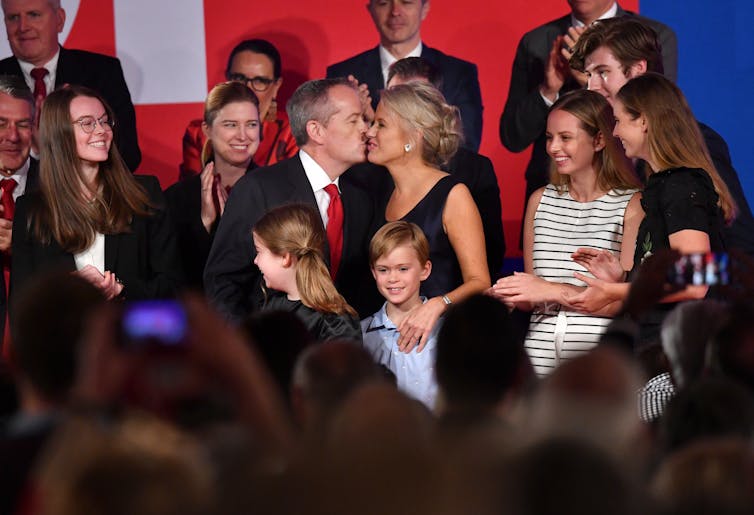
Another positive is that, if elected, Prime Minister Shorten will be armed with a more comprehensive program for government than have any of his predecessors for decades. This has been a considered strategy — again informed by the mistakes of recent governments, and perhaps most notably by the predicament of the Coalition after it gained office in 2013 on the back of an Abbott-led crusade that accentuated the negative and was threadbare in terms of constructive policies.
Shorten noted to Tingle that “one of the big problems” for incoming governments and prime ministers over recent years is that “they are like the proverbial dog that caught the truck. What do we do now?”
On the other hand, there are real questions about how Shorten will manage the larger forces that have conspired against the post-Howard set of prime ministers – for instance, a balkanised electorate riven by jarring interests and identities.
If Labor does form government, it looks like doing so with a primary vote of less than 40% — this would be the lowest starting core support base for any federal government since the settlement of Australia’s party system more than a century ago. It will narrow the foundation of Shorten’s prime ministership and leave him with less secure political capital to push through an agenda. It will render his government more vulnerable and potentially prone to skittishness.
In addition, Shorten will have to contend with the anarchic and fragmented contemporary media environment that, as each recent prime minister has discovered, greatly complicates the task of constructing and sustaining a unifying narrative and dissipates their powers of persuasion.
In the end, of course, we cannot forecast with confidence Shorten’s prime-ministerial destiny should he emerge victorious on Saturday. But, if defeated, we can be sure of the fate of his leadership: it will be an unceremonious end of the line. Shorten will join the likes of Evatt, Calwell, Hayden and Beazley who, for all their other notable achievements in public life, will be forever remembered as also-rans in the competition for the most glittering prize in Australian politics.
And we will belatedly learn that the drover’s dog could not win after all.
By Paul Strangio, Associate Professor of Politics, Monash University
This article is republished from The Conversation under a Creative Commons license. Read the original article.


